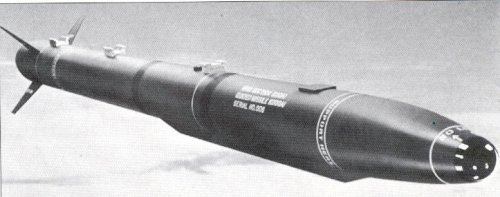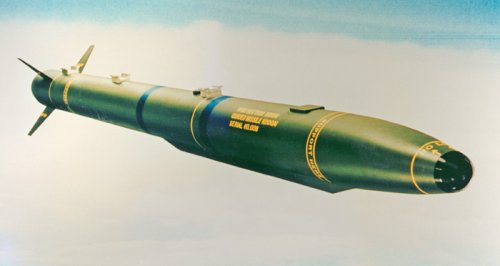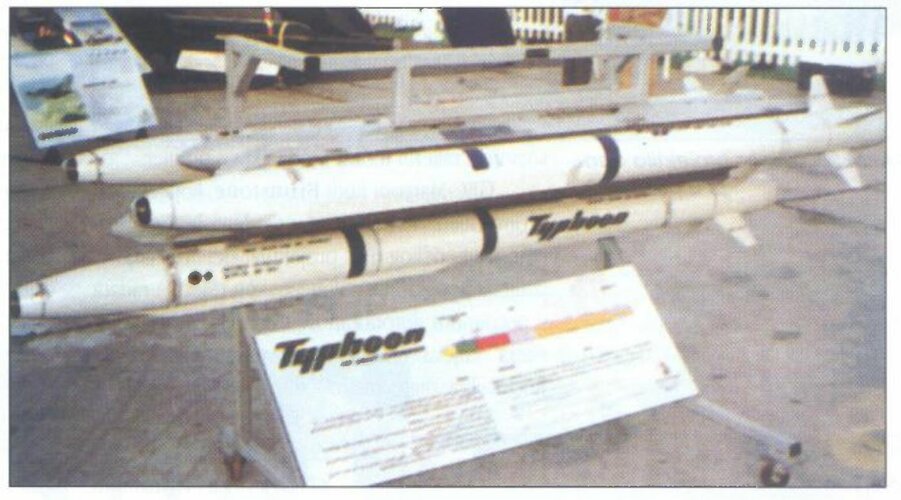You are using an out of date browser. It may not display this or other websites correctly.
You should upgrade or use an alternative browser.
You should upgrade or use an alternative browser.
BAE Dynamics Typhoon anti-armour missile
- Thread starter PMN1
- Start date
- Joined
- 3 January 2006
- Messages
- 1,057
- Reaction score
- 576
PMN1 said:Does anyone have the planned performance figures of the ASRAAM derivative that lost out to the Brimstone anti-armour missile?
I have only seen a very poor quality black and white photo of an airshow mockup. On the face of it, an ASRAAM derivative should have had a far longer range than the final Hellfire based Brimstone, but it seems that the rocket motor was reduced in size to accomodate a modified Trigat warhead.
Here is what Harrier had to say on the subject:
http://www.secretprojects.co.uk/forum/index.php/topic,178.msg13698.html#msg13698
I can only hope that BSP4 could further illuminate the matter?
- Joined
- 27 December 2005
- Messages
- 16,722
- Reaction score
- 20,509
Unfortunately not really much to add, except a side view drawing. Its a bit recent to get much published.
Mercurius Cantabrigiensis
ACCESS: Restricted
- Joined
- 8 November 2007
- Messages
- 46
- Reaction score
- 18
Offered to the UK MoD to meet the RAF requirement SR(A) 1238, the Typhoon air-to-ground version of ASRAAM had a shorter rocket motor with the lower impulse needed for the new role (plus the shorter length needed to house a larger warhead), a radar altimeter, and revised seeker software. The warhead was an off-the-shelf item – the Thomson Dasa tandem-charge warhead from the Long Range TRIGAT missile. This was located just aft of the seeker (on ASRAAM, the warhead was mounted just ahead of the rocket motor) so an external cable duct was used to carry electrical signals past the warhead section.
In hardware terms the seeker was unchanged from the Hughes 3-5 micron IR seeker used in ASRAAM, but used a pushbroom search for ground targets. According to BAe engineers, Typhoon retained an air-to-air ability that is “significantly better than the best [then-existing] variant of Sidewinder,” and would have been especially effective against targets flying in clutter, such as low-flying helicopters.
Mercurius Cantabrigiensis
In hardware terms the seeker was unchanged from the Hughes 3-5 micron IR seeker used in ASRAAM, but used a pushbroom search for ground targets. According to BAe engineers, Typhoon retained an air-to-air ability that is “significantly better than the best [then-existing] variant of Sidewinder,” and would have been especially effective against targets flying in clutter, such as low-flying helicopters.
Mercurius Cantabrigiensis
- Joined
- 27 December 2005
- Messages
- 16,722
- Reaction score
- 20,509
WatcherZero
ACCESS: Top Secret
- Joined
- 22 May 2023
- Messages
- 551
- Reaction score
- 1,052
I think I saw a higher res image on Think Defence's website but I cant find which article it was in.
Similar threads
-
-
AST 1227: BAe Sabre ASM
- Started by overscan (PaulMM)
- Replies: 19
-
-
Swedish Missiles and Missile Projects.
- Started by Tzoli
- Replies: 24
-
Taktisches Luft-Verteidigungs-System (Tactical Air Defense System) [TLVS] 1980s
- Started by Grey Havoc
- Replies: 6



